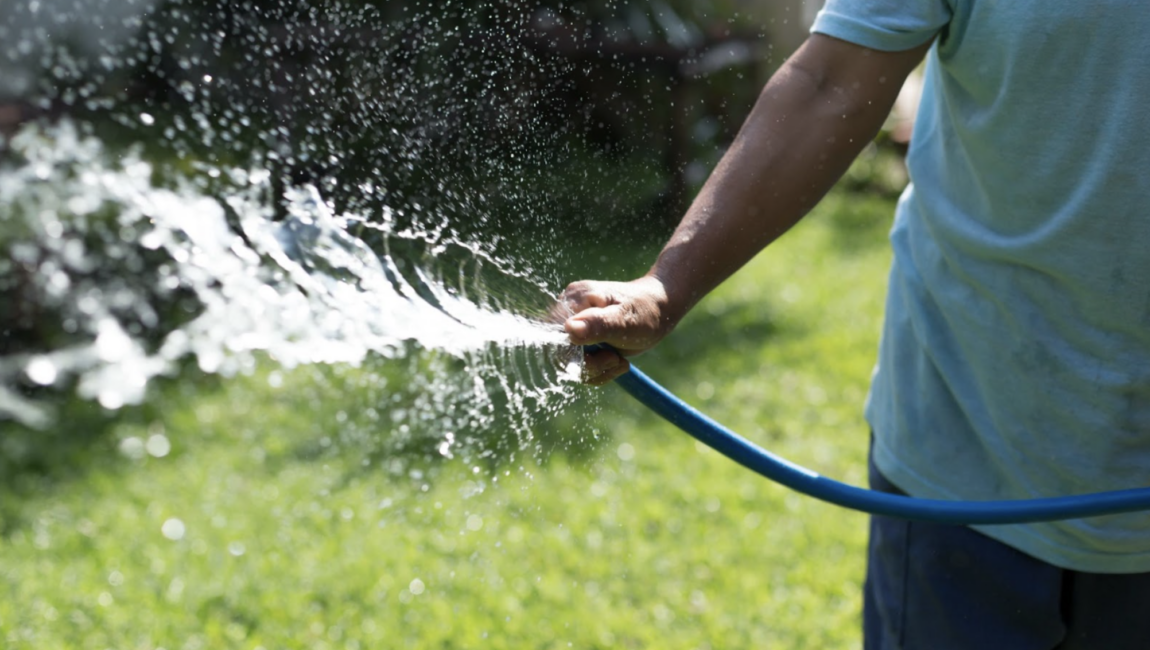
Each year your lawn starts with great promise of a lush green carpet after spring rains. Then summer comes and the lack of rain can make that lush carpet start to feel more like a brillo pad in hues of beige.
When the shortage of rain turns into a drought, it’s hard to not just give up. But don’t abandon all hope! While your yard may not be as perky green as it was in the beginning, there are ways to keep it alive even during a drought.
- Keep watering your lawn. It may sound like a no-brainer, but you may be surprised to learn that watering is essential; however, you don’t need to water every day. Here are the key factors for watering:
- Water between the hours of 5 a.m. to 9 a.m. Watering in the early morning reduces evaporation whereas watering in the evening can encourage disease or pests.
- If you want to keep your turf green, you need to water about 2-3 times a week. However, this will also come with a high water bill.
- If you are ok with letting your lawn go dormant (aka – brown), watering once every other week should be sufficient to keep it from completely dying. Whichever you decide to do, when you do water – give it a good soaking, a half an inch should be sufficient. While you’re at it, make sure you only water your yard and not the street or sidewalks.
- Hold off on lawn projects. Because drought conditions are already stressful on a lawn, wait on aerating and dethatching. This way your grass can retain as much moisture as possible.
- Wait to fertilize until late fall. Fertilizing during a drought has the potential to burn a lawn. Do your fertilizing in the late fall when temperatures are cooler.
- Control the weeds. Even though it seems like they are the only thing growing when it’s dry, weeds are competing with your turf for all the nutrients and moisture needed for growth. Pull your weeds, but if you must spray, spot spraying is best.
- Set your mower blade high. Don’t mow shorter than three to four inches. Taller grass helps the lawn have deeper and larger root systems which will keep moisture in and weeds out.
- Let the grass lay there. Take off the bag on your mower and let the clippings self-mulch. Leaving the clippings will help keep the moisture and nutrients in the soil.
- Sharpen your mower blades. Dull blades not only make your yard look like a bad haircut; they tear the grass blade instead of cut it, causing it to need more water to recover.
- Plant drought-tolerant grasses. There are several grass varieties that have lower water needs; a couple of varieties are Tall Fescues and Buffalograss.
While watching your lawn struggle is never fun, with these quick tips you are ensuring that next spring’s lush green grass will be back as healthy and strong as ever.
